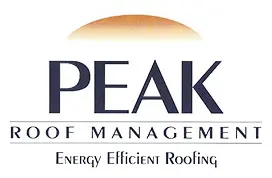Long-Lasting Polyurethane Foam Roofing System
Properly selected, a roofing system can offer years of protection. Improperly selected, it can bring years of headaches. In fact, while the roof represents 6% of the average building cost, it represents over 60% of construction litigation. Choosing a polyurethane foam roofing system eliminates the risk.
BENEFITS OF COOL ROOFING
PROBLEMS WITH THE TYPICAL ROOF
It may surprise you to learn that 90% of the roofs in California reach summer peak temperatures of 150 to 190 degrees. These excessive temperatures contribute to many problems:
WHAT IS COOL ROOFING?
Cool roofing material is defined for the Cool Roof Retrofit Program as having:
The benefits of cool roofing are its ability to stay 50 to 60 degrees cooler in the summer sun (in the desert area, these temperatures are increased substantially).
COOL ROOFING SOLVES PROBLEMS
Making a simple and cost-effective switch to cool roofing materials brings many benefits to building owners, occupants, and the community. Seven major benefits of cool roofing are:
A POLYURETHANE ROOF LOOKS BETTER ON YOUR BOTTOM LINE
Properly selected, a roofing system can offer years of protection. Improperly selected, it can bring years of headaches. In fact, while the roof represents 6% of the average building cost, it represents over 60% of construction litigation. Choosing a polyurethane foam roofing system eliminates the risk.
Easier To Install
Other roofing systems simply cannot offer the total value of a polyurethane roof. The combination of a long life cycle, low maintenance, leak-free performance, and energy efficiency makes this roofing system a much smarter choice economically.
Versatile
A polyurethane roof can be applied over practically any previous roofing material without the need to tear off the old roof. This feature not only saves time and labor but expensive disposal fees as well. Since it is self-flashing, it coats and seals all protrusions and corners without requiring special equipment or fasteners. In addition, because installation is faster and quieter, it is less disruptive to building occupants.
Minimal Maintenance
Maintenance and damage control are far simpler and less costly. There can be no lateral seepage of water through the system, so if there is a leak, it’s easy to find and easy to fix, requiring less labor and materials. In fact, a caulking gun is often all that is needed.
YOUR POLYURETHANE ROOF PAYS FOR ITSELF
The polyurethane roof system is the most energy-efficient system available. Study after study has demonstrated the ability to recover the entire cost of the roof in a short period of time. Besides having the highest R-value of any available construction material, Polyurethane is seamless and does not allow for any joints or thermal shorts. Compare this to a typical roof with mechanically attached board insulation. Studies have shown that through the gaps and the metal fasteners, as much as 38% of the insulating value can be compromised.
Many companies like Ford Motor Company, General Electric, and JC Penney have been using foam roofs for over 20 years. With roofs in the millions of square feet to maintain, they selected polyurethane foam. Some of the reasons include simple reliability, low maintenance, and documented substantial energy savings. In fact, the results of a study done at Texas A&M demonstrated the ability of the polyurethane foam roofing system to recover the total installation cost in an average of 4 ½ years, strictly through reduced energy consumption.

